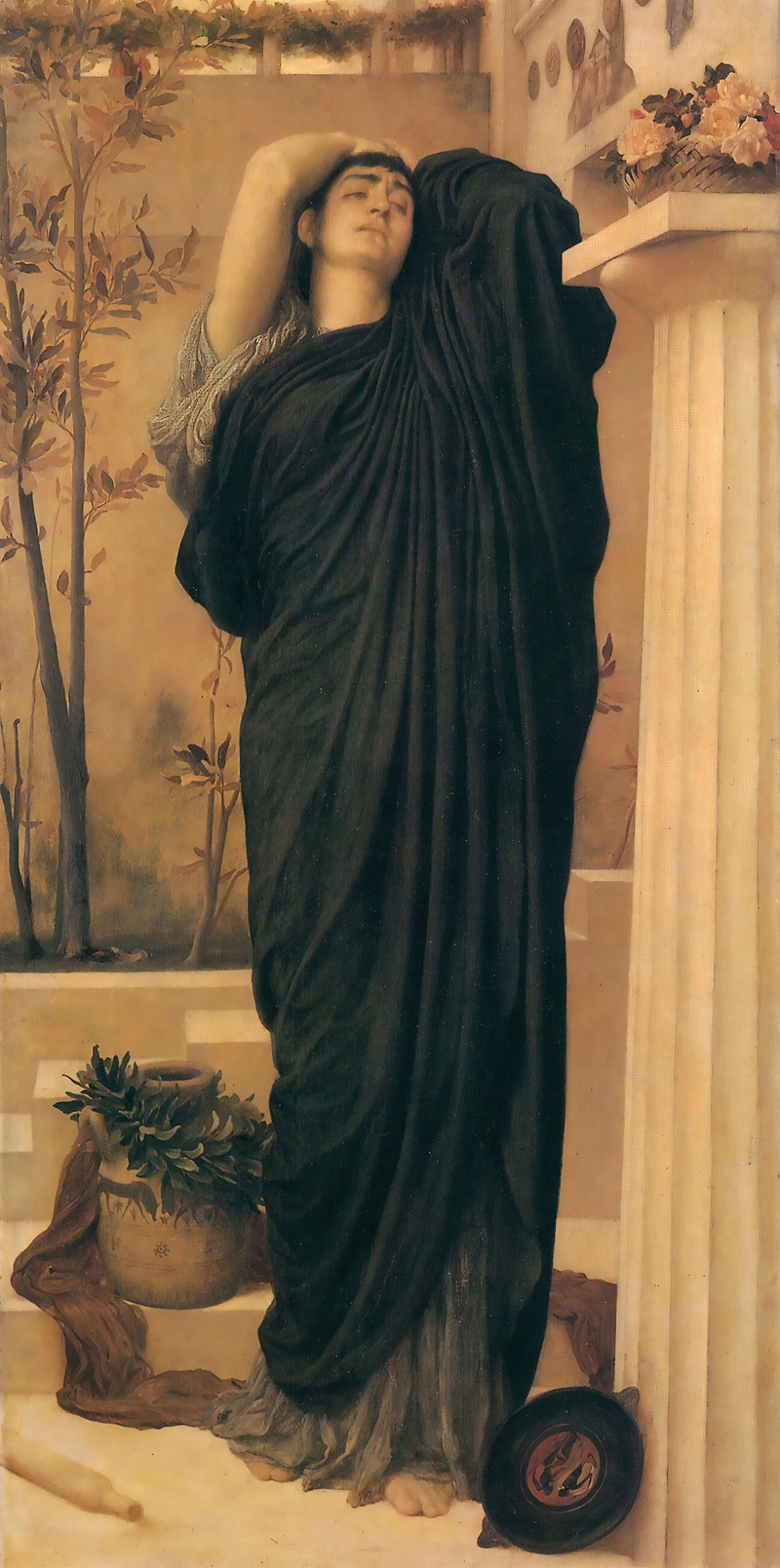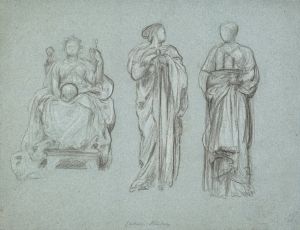
Electra At The Tomb Of Agamemnon
A hand-painted replica of Frederic Leighton’s masterpiece Electra At The Tomb Of Agamemnon, meticulously crafted by professional artists to capture the true essence of the original. Each piece is created with museum-quality canvas and rare mineral pigments, carefully painted by experienced artists with delicate brushstrokes and rich, layered colors to perfectly recreate the texture of the original artwork. Unlike machine-printed reproductions, this hand-painted version brings the painting to life, infused with the artist’s emotions and skill in every stroke. Whether for personal collection or home decoration, it instantly elevates the artistic atmosphere of any space.
"Electra at the Tomb of Agamemnon" is a painting by the British artist Frederic Leighton, completed in 1869. The work is an oil on canvas and is considered one of Leighton’s significant contributions to the Victorian era's classical revival in art. The painting depicts a scene inspired by Greek mythology and classical literature, specifically the story of Electra, a central figure in the tragedies surrounding the House of Atreus.
In the painting, Electra is shown mourning at the tomb of her father, Agamemnon, the king of Mycenae, who was murdered upon his return from the Trojan War. The composition captures a moment of profound grief and solemnity, reflecting Electra’s deep sorrow and her determination to seek justice for her father’s death. The subject matter is drawn from ancient Greek tragedies, including works by Aeschylus, Sophocles, and Euripides, which recount the story of Electra and her brother Orestes avenging their father’s murder by their mother, Clytemnestra, and her lover, Aegisthus.
Leighton’s painting is notable for its meticulous attention to detail and its classical aesthetic. The artist was deeply influenced by his academic training and his admiration for classical art and literature. The composition is carefully balanced, with Electra’s figure dominating the foreground, her posture and expression conveying a sense of restrained emotion. The tomb itself is rendered with architectural precision, evoking the grandeur and solemnity of ancient Greek funerary monuments.
The color palette of the painting is subdued, with earthy tones and muted hues that enhance the somber mood of the scene. Leighton’s use of light and shadow adds depth and dimension to the composition, emphasizing the emotional intensity of the moment. The drapery of Electra’s garments is rendered with a sculptural quality, showcasing Leighton’s skill in depicting the human form and his interest in classical sculpture.
"Electra at the Tomb of Agamemnon" reflects Leighton’s broader artistic goals of elevating contemporary art through the incorporation of classical themes and techniques. The painting was well-received during its time and remains an important example of Victorian classicism. It is housed in the collection of the Ferens Art Gallery in Hull, England, where it continues to be appreciated for its artistic and historical significance.


















